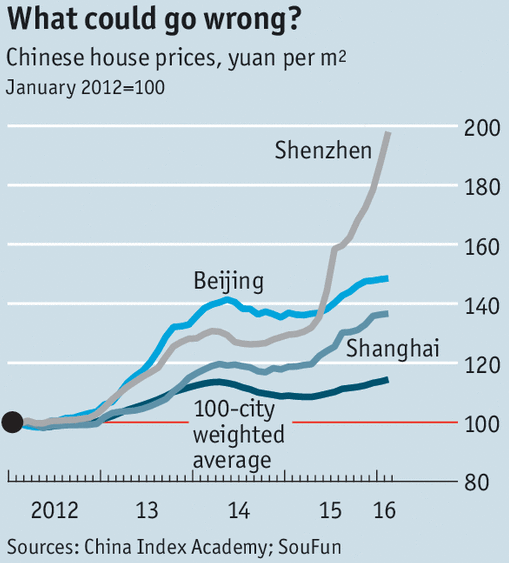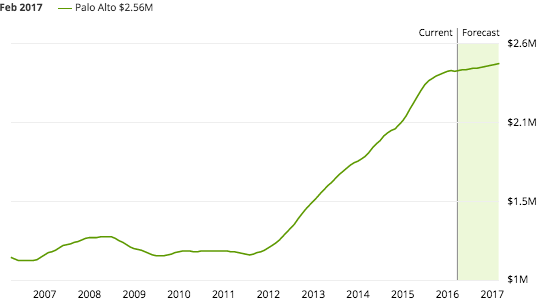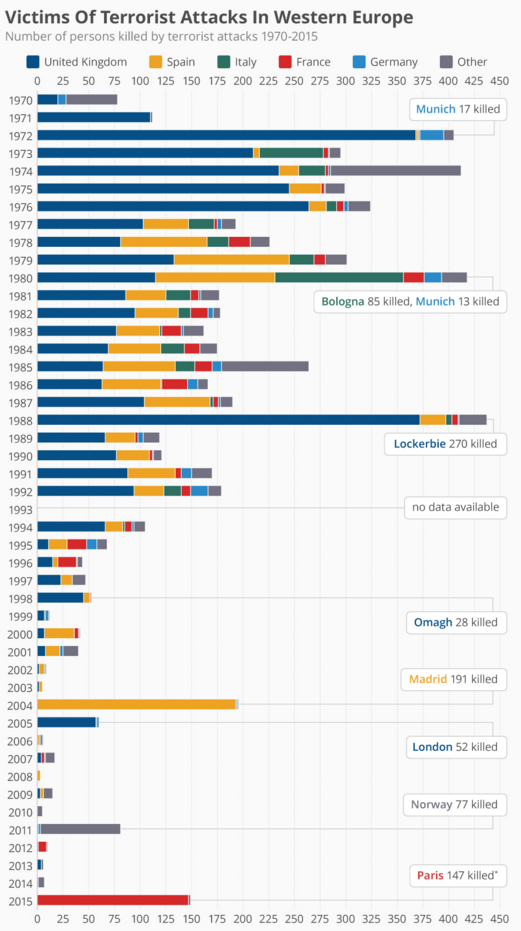Fed policy options
The Fed has three primary ways to impact NGDP:
1. Change the supply of base money–primarily through open market purchases (OMPs), or sales.
2. Change the demand for base money through adjustments in interest on reserves (IOR)
3. Change the demand for base money through adjustments in the Fed’s target (inflation, NGDP, etc.), or making it more credible though actions such as level targeting, or currency depreciation in the forex market.
Most pundits think and talk in terms of binaries, and thus underestimate the policy options available to the Fed. Thus a pundit might say we need to ban currency and break the zero bound, because OMPs are ineffective at the zero bound—forgetting the option of impacting base money demand by adjusting the policy target.
For each of the three options, it’s useful to treat one as a given, and think about the other options in a two dimensional space. Thus if we have a given policy target, say a 4% NGDP target path, then the Fed has two tools to get there, OMPs and adjustments in IOR. Then you can think about how much weight the Fed should put on each tool, by considering other objectives, such as size of the balance sheet. For any given NGDP target, the higher the IOR the larger the balance sheet, and vice versa. If the Fed wants banks to hold lots of liquidity, they might opt for a higher IOR. If they are worried that they’ll need to do a lot of QE to hit their target, and that this QE will be politically unpopular, they’ll go for negative IOR. (That’s where the ECB is right now.)
But we don’t have to think of the policy target as a given. Japan recently raised their inflation target from 0% to 1%, and then later to 2%.
Or we could assume that for some reason IOR is fixed at zero, as it was during the Fed’s first 95 years. Then the trade-off would be between steepness of target path and size of balance sheet. The faster the desired rate of NGDP growth, the smaller the ratio of base money to GDP, and hence the smaller the central bank balance sheet. Australia chose a high target path, and got a very small RBA balance sheet as a result.
And finally, the balance sheet itself might be a key objective. For instance, the Swiss National Bank recently became concerned about their ballooning balance sheet. Suppose central banks are averse to a large balance sheet. In that case the target path and IOR become the two policy options. The Swiss could opt for a higher rate of inflation, or they could opt for a lower rate of IOR. In fact, they’ve opted for negative 0.75% IOR, an especially low rate. In my view they should have changed the (effective) inflation target, by not revaluing last year.
Even within a category such as OMPs, there are several possible options. Thus the central bank could buy Treasury bonds, or they could buy a riskier asset. Generally speaking, the riskier the asset the more “bang for the buck”, but not as much more as you might imagine (in my view.) Monetary policy primarily works by impacting the liability side of the Fed’s balance sheet; the asset purchases are not very important. However when we are at the zero bound, or when the market rate equals the interest rate on reserves, it’s quite possible that the asset side becomes relatively more important. It’s hard to say how much more, because policy at the zero bound is especially sensitive to expectations of future policy. But if we hold the NGDP target path constant, then the specific type of assets being purchased might make some difference.
Here’s a question from Eliezer Yudkowsky:
Should market monetarists be pushing heavily to have the Fed be buying higher-priced bonds, foreign assets, or non-volatile shortable equities, instead of US Treasuries?
It seems to me intuitively that buying Treasuries with money might itself be a wobbly steering wheel, because as the Treasuries have lower yields and especially as you foolishly start to pay interest on reserves, you’re substituting two very similar assets. As the two assets get *very* similar you might be approaching a division-by-zero scenario where it takes unreasonably large amounts of money creation to change anything. And yes, there’s still an amount of money that’s enough. But maybe you would literally have to run out of short-term Treasuries to buy. Maybe you’d need to print far less money if you were buying a basket of low-volatility stocks or something. So maybe this is one of the things that market monetarists should push for, for the same reason we push for not using interest rate targeting because the meaning of the asset keeps changing? Like, if we try to create money and exchange it for Treasuries, does the meaning of that act change and diminish even as the Treasury yields get closer to zero.
If printing more of the unit of account or unit of exchange is supposed to have a mode of action that doesn’t interact with the similarity of that currency to the Treasuries that it’s replacing, then I confess that this is something I still don’t understand myself and definitely couldn’t explain to anyone else. It might need to be explained to me with some kind of concrete metaphor involving apples being traded for oranges in a village that prices everything by apples, or something. Right now, the only part I understand is the notion that people have a price/demand function for things-like-currency, which implies that if a Treasury has become a thing-like-currency, creating currency and removing Treasuries will be a wash in terms of the demand function.
I think this question needs to be broken down into pieces. First, are we happy with the policy target? In my view the ECB and BOJ should not be happy with their policy target, as it leads to such low NGDP growth expectations that they are forced into unpleasant decisions on IOR and/or QE. They’d be better off with another target, say level targeting of prices, which would lead to faster expected NGDP growth and less need to do negative IOR or QE.
But let’s say the target is carved in stone, then what are the options?
I prefer starting with buying Treasuries, even if it is less effective than other assets. Recall that seignorage is basically just a form of tax revenue, which ultimately goes to the Treasury. Unless you specifically want to build sovereign wealth fund, it’s not clear why you’d want the Fed to buy stocks. And if you do want to build a sovereign wealth fund, it seems like it should be the Treasury’s decision. In other words, the Treasury could borrow a trillion dollars and use it to buy index stock funds. Then the Fed would have lots more T-debt to buy. This combined operation has the same ultimate effect as Eliezer’s proposal, but the lines of authority are clearer.
The next question is how much T-debt should the central bank buy? I don’t really know. I’d probably ask the Treasury how much they’d like to leave in circulation to give liquidity to the markets (which might be $5 trillion), and then stop at that red line. At that point I’d have the Fed buy other assets, such as Treasury-backed GSE debt (i.e. MBSs), foreign bonds, AAA corporate debt, etc. I suppose at some point you might end up buying stock, but I can’t really envision that happening. On the other hand, a decade ago I couldn’t envision where we are right now—-6 1/2 years of nearly 4% NGDP growth and interest rates at 0.5%. So who knows?
To summarize, I have several objections to the Fed buying stocks right now:
1. I doubt it provides much more bang for the buck, as it’s the liability side of the Fed’s balance sheet that really matters.
2. Even if they do need to buy more Treasury debt (relative to stocks), buying that debt is not costly, indeed the Fed usually makes a profit.
3. Any decision to build a sovereign wealth fund should be made democratically, i.e. by the Treasury.
I could add other objections, such as that it’s “socialism”. However I’m actually not all that worried about the Fed meddling in the management of companies. But lots of other people would be.
Eliezer’s right that base money and T-debt are much closer substitutes at the zero bound, but I don’t see that as a problem. So do more!
I prefer to work back from the target. What percentage of GDP does the public want to hold in the form of base money, if the central bank is expected to hit its target? Right now people are confusing two issues, a desire to hold base money because rates are low, and a desire to hold base money because the central bank is not expected to hit its target (as in Japan and the eurozone). If credibility is the problem, then you need a mechanism to restore credibility. I like my “whatever it takes” approach and/or level targeting, but other options are available. Thus small countries like Switzerland can simply devalue their currency.
Until we get clear thinking from the central banks about the three policy levers discussed above, it’s hard to give good policy advice. For instance, if the ECB actually has big problems hitting its inflation target at the zero bound, then the asymmetry built into their target is obviously exactly backward. In a world where the zero bound is a big problem, the target should be “close to but not below 2%”. Right now, they have a policy target that conflicts with their operating procedure. The target reflects the assumption that it is high inflation that is difficult to control. And yet exactly the opposite seems to be true.
Then central banks need to think clearly about the inflation rate/size of balance sheet trade-off (at each IOR). They don’t seem to know whether they are more averse to higher inflation or to a very big balance sheet, and hence end up in the worst of both worlds—missing the inflation target and thus getting an even bigger balance sheet. Of course the lack of clear thinking might actually reflect very clear thinking by each member of the ECB, but no agreement on which of those clear paths is best. But I think it’s worse than that, you have central bankers saying we need to raise rates so that we can cut them in the future, an EC101-type error. So I’m not willing to give them the benefit of the doubt.
I don’t think Eliezer will be happy with this post–it’s too long to be an “elevator pitch”




